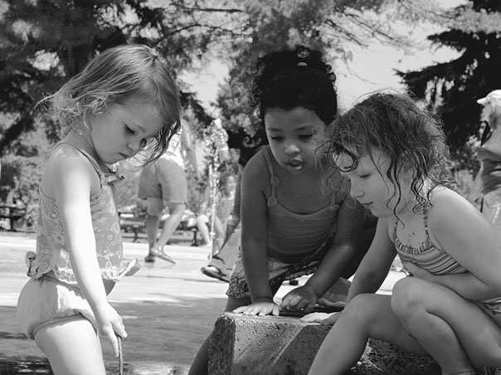The No Cry Discipline Solution (15 page)
Read The No Cry Discipline Solution Online
Authors: Elizabeth Pantley




First, Solve the Real Problem
59
Mother-Speak
“ My daughter has suddenly become very independent. She
decided that it was time to learn how to dress herself. My
normally quiet, even-tempered toddler was now yelling,
groaning, grunting, and at times crying in her room. And this
didn’t just occur in the morning—oh no, we had to experi-
ence fi ve or six clothing changes every day. At fi rst I was
annoyed with her frustrated attempts, and yet she wouldn’t
accept help. I determined that the easiest way to handle the
aggravation was to allow plenty of time for clothing changes
several times a day. I let go of the need to control her cute
outfi ts and perfect hair and just let her wear anything she
could get her hands on. Inside, outside, all around the house
and neighborhood she proudly displayed her unique cloth-
ing accomplishments. Two weeks later, I have to say that my
willingness to give her space and time, and give up my own
agenda, has paid off. She’s now down to only two outfi ts a
day in less than fi ve minutes each! Proof that practice makes
perfect, even if Mama has to put up with some toddler-style
frustration!”
—Sarah, mother to Gracie, age 3, and Sam, age 1
Yes, we want to teach our children to be independent, but we
don’t need to do it all in one day. Sometimes, it’s better for you to
take over and save the practice for later, during a calmer moment.
When you do have the time, a few minutes of guidance and direc-
tion can go a long way toward helping your child learn to master a
task. You may also want to look for opportunities to help your child
practice her many new skills under unrushed circumstances.





60
No-Cry Discipline Parenting Skills and Tools
Mother-Speak
“ I have had to tell my child, ‘It’s okay for Mommy to help you.’
He wants so badly to do it by himself that although he is
having trouble, he refuses help. I think letting him know that
accepting help is okay helps him relax.”
—Stacey, mother to Tasneem, age 7; Umar, age 5;
Yusuf, age 2; and Zayd, age 1
The Problem: Boredom
Children are incredibly curious and on a constant quest for knowl-
edge. It is a biological necessity and is as powerful a need as hunger
or thirst. A child’s job is to learn new things, and when we don’t
provide the proper stimulus, he will fi nd it himself, or fi ll the void
with an emotional breakdown. For example, if your child is ush-
ered around town for hours as you run countless mundane errands,
it’s likely a tantrum and fussiness will be going right along with
you. If he is put in the same room and given the same toys day after
day to occupy his time, his boredom with the unchanging environ-
ment will often lead him to search for stimulation and experiment
in ways that are perceived as misbehavior.
Solutions
Quench your child’s never-ending thirst for learning something
new—no matter where you are. When you’re on the go, bring along
a small bag of toys, books, and snacks. Point out interesting things
at your destinations. Play word games. “I spy something red.” “How
many things can you fi nd that start with the letter
B
?” “What word rhymes with
cat
?” “Can you count the people standing in line?”
First, Solve the Real Problem
61
A great boredom buster is to get your child involved in what you
are doing. Even a toddler can pick three red apples at the grocery
store, snap peas in half during dinner preparation, and fetch a diaper when you are changing the baby. Children who are actively
involved and engaged tend to be happier and less disruptive than
those who are bored and unfocused.
Rotate the toys that are available to your child for playtime—
separate your child’s toys into three boxes and put out one-third
at a time in his play area. Every few days, or once a week, rotate
the boxes to keep the offerings fresh. Add new things to the mix
often. Avoid noncreative toys with limited purpose. Instead search
for toys that have long play value and that can be used in a variety
of ways, such as building blocks, toy animals, and miniatures of
real-life things (play kitchen sets or tools, for example).
Frequently a daily routine involves having a child play in exactly
the same place day after day—often in a toy corner. I encourage
you to set up various small play centers throughout your house,
since a new environment provides interesting changes and will
keep a child happy and engaged much longer.
Here’s one more thing to keep in mind: while you want to pro-
vide your child with the tools to stay busy and interested, you don’t
want to become the tour director. Give your child toys and direc-
tion, but don’t feel that you must orchestrate every activity. Nor
should you be the permanent playmate. Encourage your child’s
ability for independent play.
The Problem: Overstimulation
Certain types of situations are breeding grounds for children’s
unruly behavior. When a child or a group of children are in
an intense, noisy, active situation there is a good chance their behavior will also be intense, noisy, and active. Typical situations
